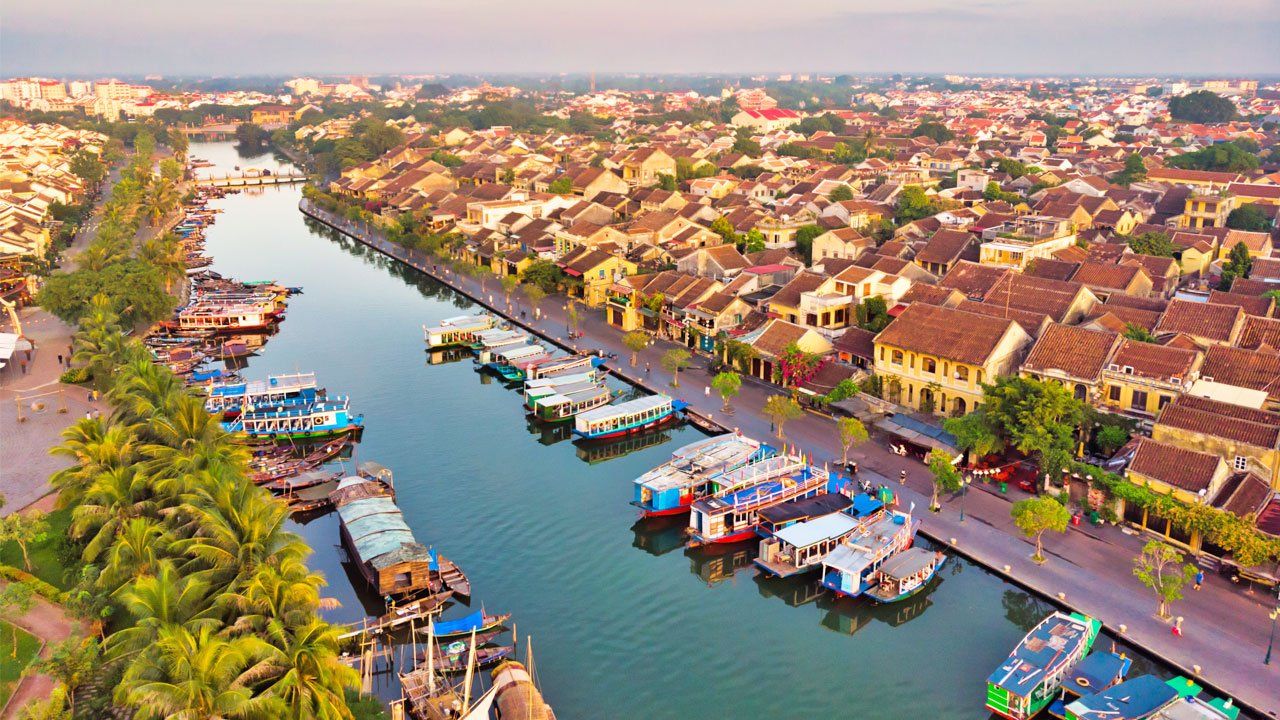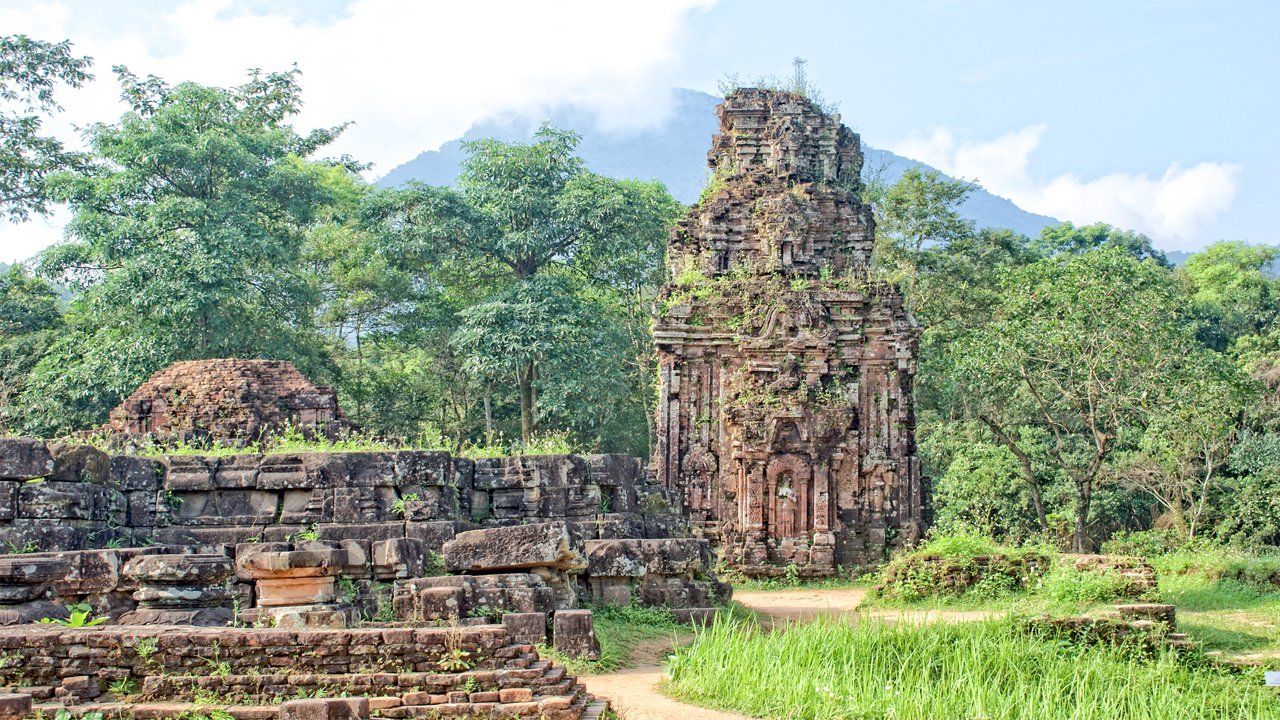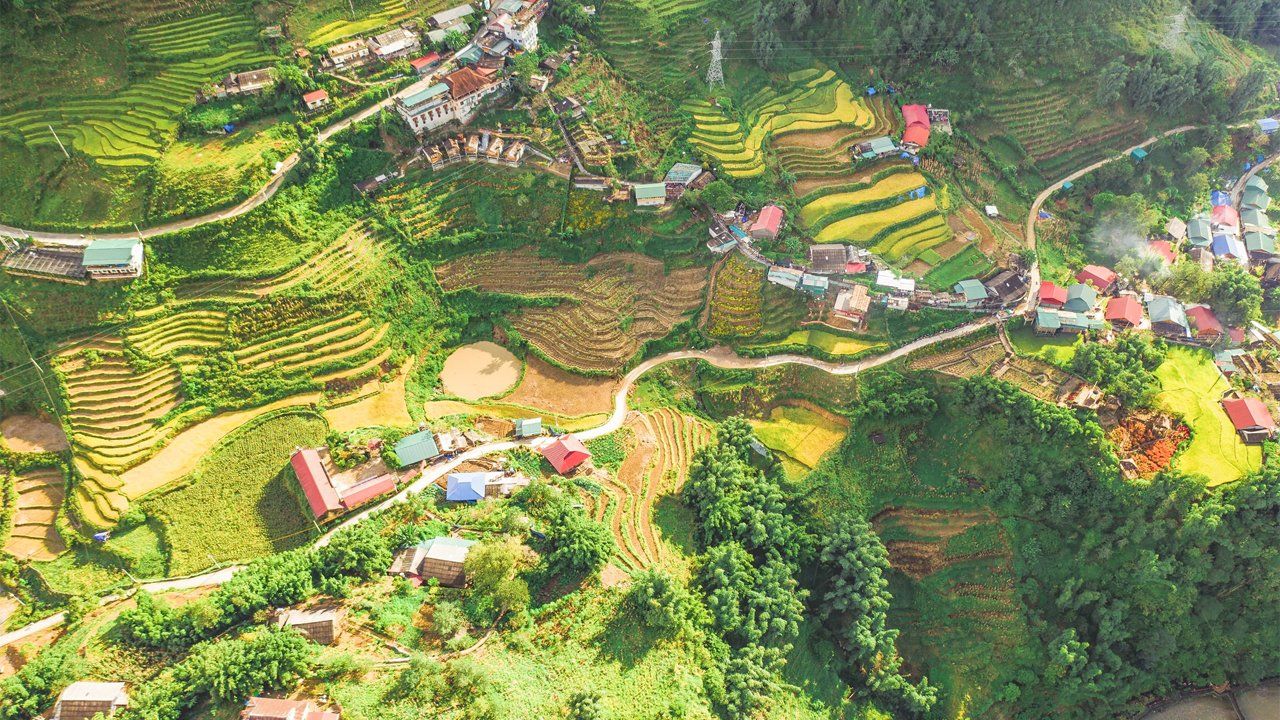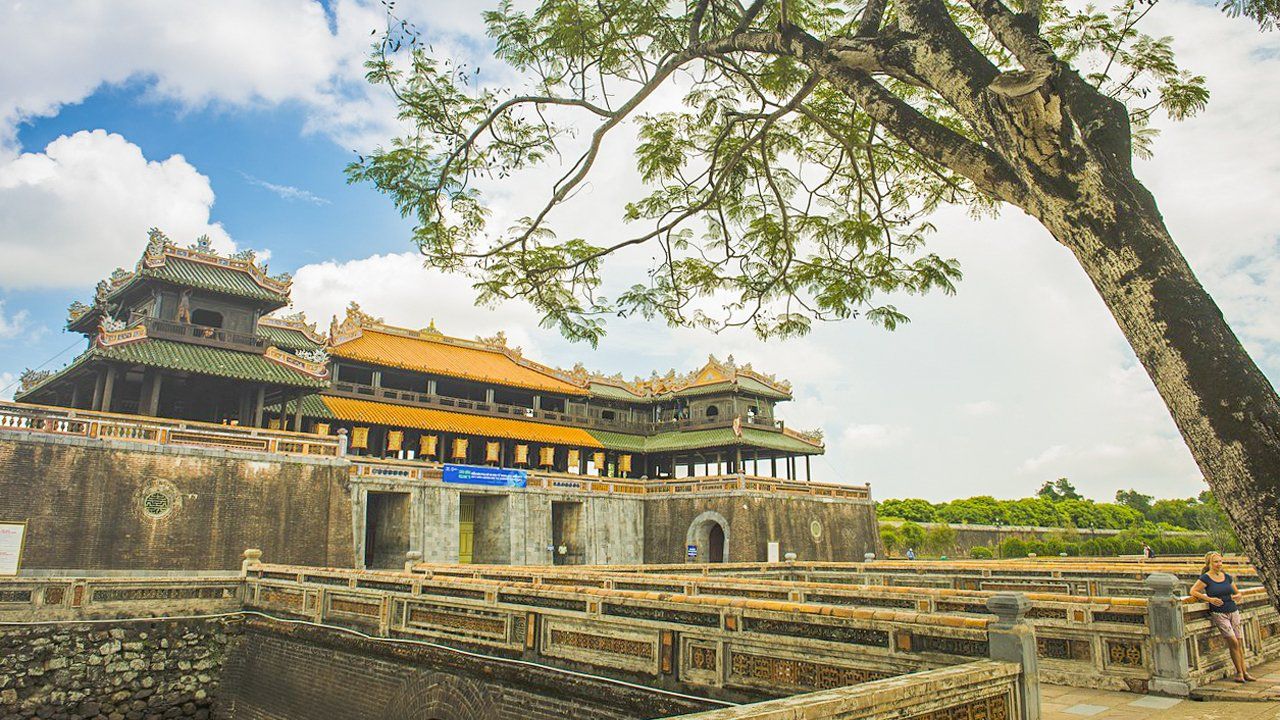7 Best Places to Visit in Vietnam
Vietnam is a fantastic travel destination with many exciting attractions. You can explore the ancient Hindu ruins hidden between beautiful mountains, take a cruise in the emerald green water between the limestone cliffs of Halong Bay or go on a voyage of discovery on an isolated tropical island.
Here are the 7 best places to visit in Vietnam:
1. Cruising through Halong Bay
In Halong Bay, you’ll see amazing scenery as you drive across the bay’s emerald-green waters, where limestone cliffs dotted across the bay tower vertically towards the sky. In total there are more than 1,600 islands and Werder in the whole bay.
In 1994, Halong Bay was added to the UNESCO World Heritage List due to its unique and unspoiled nature. Getting to know the bay on a small cruise is just perfect. You glide through the beautiful landscape and have a fantastic view of the islands. During the cruise, you’ll also get to know some of the bay’s secluded islands. Kayaks are rented on some ships so that you can explore the bay’s hidden caves and experience nature up close. You can also swim in the emerald green water or just enjoy the view of the fantastic landscape.
During your cruise, you will pass small floating fishing villages. The inhabitants have adapted to the conditions in the bay over thousands of years. But life in the fishing villages has changed drastically after a change in the law forced residents to move to the mainland so that the children could get a better education. In this way, one also wanted to prevent pollution of Halong Bay.

2. Hoi An Ancient Town
In the old part of Hoi An, an incredibly well-preserved old trading town, you can really get to know old Vietnam. This old part of town was the trading center of Southeast Asia from the 15th to the 17th century, visited by traders from all over the world. Many travelers had influenced the architecture in this district over time. And this is still visible today. There are around 800 well-preserved buildings, 28 of which you can visit.
In the old part of town, there are Chinese temples, houses from the French colonial times, and small picturesque streets. One of the most popular attractions in this district is Chùa Cầu (the Japanese bridge), the symbol of Vietnam. The bridge was built in the Japanese style in the 18th century and allowed Japanese residents in Hoi An to get to the Chinese Quarter in this part of the city that was across the river.
The Thu Bon River flows through the old part of Hoi An and its banks are the perfect place for a cozy evening. When the city’s lanterns are reflected in the water, an almost magical atmosphere is created. There are many cozy restaurants on the banks of the river, where you can taste the delicious traditional Vietnamese dishes or learn how to prepare Vietnamese food. There are also small markets near the river where fishermen sell their catch in the early hours of the morning.

3. Explore the Mekong Delta
In the south of Vietnam is the Mekong Delta, a 40,000 m2 nature area. The delta consists of many small rivers and watercourses that criss-cross and form a gigantic labyrinth.
The Mekong Delta was formed by the Mekong River, which is 4,500 kilometers long and flows through no less than 6 countries. The delta forms the basis for a diverse natural area and for agriculture. Rice production around the delta is enormous, which has given the Mekong delta the nickname “Vietnam’s pantry”.
When exploring the delta, you will ride on small watercourses and rivers that run between the green coconut palms that grow in the water of the delta. On this waterfront cruise, you might meet locals selling watermelons, coconuts, and pineapples from their boats.
Although the environment in the delta is so different from our conditions at home, people actually live here in the delta as well. As you drive through the delta, you will pass small villages. You will see a family using coconut palm leaves for the roofs of their houses and even see a rice paper factory.
Related post: The Mekong Delta: What to do and see

4. My Son Temple City in Hoi An
About 40 kilometers from Hoi An is the My Son Temple City, an area with ruins of historical Hindu temples. The temples were built between the 4th and 13th centuries for religious ceremonies of the Cham dynasty. The temples were also used as burial sites for the dynasty’s royal family.
The first temples were built of wood in honor of the Indian deity Shiva. Unfortunately, they burned down in the 6th century. But many of the temples were rebuilt. There were up to 70 temples in the area.
Shortly after the last temples were built in the 13th century, the area was again abandoned. They were forgotten until 1898. That year, My Son was rediscovered by a French.
Today the temple ruins are spread out between beautiful mountains in this 2 kilometers wide area. During your excursion, you will experience many of the beautiful and impressive ruins, some of which are “swallowed” by nature.

5. The natural beauty in Sapa
Sa Pa, which has some of the most beautiful natural spots in Vietnam, is located at around 1,500 meters above sea level in northern Vietnam. Sa Pa is hiding in this hilly mountain landscape, surrounded by the Hoang Lien Son mountain range. Several of the mountains are covered with beautiful green rice terraces.
Due to the fantastic nature of Sa Pa, this place is also one of the best hiking areas in Vietnam. From Ta Van village to Lào Cai, where the Hmong live. Around one million people who belong to the Hmong ethnic group live in Vietnam. The Hmong of Vietnam lives primarily in the mountains on the northern border. Several groups belong to the Hmong people. You can recognize them by their different colored clothes.
During the hike, you will pass fantastic rice fields and beautiful mountains which are characteristic of the landscape, but you will also see the life of the locals in Sa Pa. You can watch the farmers plowing the fields with their oxen or harvesting rice as you climb the mountainside.
Besides the Hmong, there are other ethnic minorities in Sa Pa, such as the Yao, Zay, and Ha-Pho groups. Each ethnic group has its own traditions, dress style, and customs. Sa Pa is culturally the most diverse area in Vietnam. The different cultures are distributed throughout the Sa Pa area.
Related post: Cheap Travel Destinations in Southeast Asia 2021

6. Visit the royal citadel in Hue
On the Huong River – also called Perfume River – lies one of the UNESCO-protected areas: the Citadel in Hue. From 1802 to 1945 Hue was the capital of Vietnam. The royal family lived in the citadel.
The citadel is surrounded by stone walls. Behind it is an impressive structure with temples, pagodas, towers, and much more, with inspiration from the Forbidden City in Beijing.
In the citadel, you will see the Meridian Gate which has different gates. The middle entrance was only allowed to be used by the emperor. The emperor watched military exercises on a platform at the very top of the Meridian Gate.
Immediately after the Meridian Gate, you will come to the Palace of Supreme Harmony, or Throne Palace where the emperor held his most important ceremonies.
There are several interesting buildings to explore throughout the citadel, including the emperor’s private residence at the time and other historical structures and pavilions. Unfortunately, parts of the citadel were destroyed during the Vietnam War, but much of the citadel is now a restaurant and an interesting place to visit in Hue.

7. Ho Chi Minh: Cu Chi Tunnels
In the Cu Chi Tunnels, not far from Ho Chi Minh City, you can see an underground network of tunnels, in fact, almost an underground city that the Viet Cong were in when the war between Vietnam and America raged in the 1960s.
The Cu Chi Tunnels are a 120 km network of tunnels that contained everything the Viet Cong needed during the war. These included hospitals, commercial kitchens, and command centers. Some of the tunnels are very narrow and built so that only small people can crawl through.
However, you can still experience the underground passages of the tunnels, as some passages have been made larger and secured with cement. In the tunnel of C Tunnel Chi, you can go through a 100-meter long tunnel that is 7 meters underground. You crawl through a narrow tunnel where the Viet Cong hid during the war.
In some places the tunnel is illuminated, others are completely dark. You will experience what it was like for the soldiers to be down here. There are small burrows in the forest floor near the tunnel entrances, to which the Vietnamese soldiers fled during the war. The holes are narrow. Most adults today cannot crawl down at all.
Related post: 5 Reasons to Visit Cambodia on your trip to Vietnam

Travel Articles
Read the local stories, and get travel advice from our Travel Specialist. We have lived through our experience and wanted to bring first hands-on exploration through the local insider.
